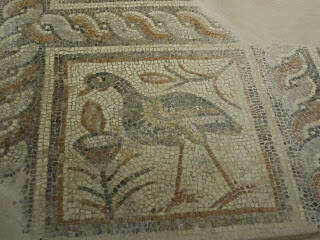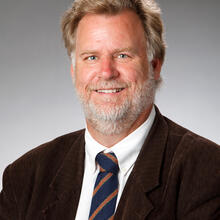This is the third entry in the Second Letter of Paul to the Thessalonians Bible Junkies Commentary. You can find the first entry here. In the first entryI discussed introductory matters, such as the origin of the Church in Thessalonica, its early history with Paul, Silvanus and Timothy, and also introductory matters of scholarship, including the structure of Paul’s letters, modeled on the Hellenistic letter form, and noting such issues as whether the letter was written by the Apostle Paul. In the second entry, I gave an overview of the content in 2 Thessalonians. In this, the third entry, I begin the process of commenting on the text itself, based on the New Revised Standard Version in English and the Greek text which underlies all translations.
4. Paul’s Second Letter to the Thessalonians:
a) Salutation (1:1-2):
1 Paul, Silvanus, and Timothy, To the church of the Thessalonians in God our Father and the Lord Jesus Christ: 2 Grace to you and peace from God our Father and the Lord Jesus Christ. (NRSV)
I will reproduce the salutation as found in 1 Thessalonians for comparative purposes, since scholars often note how similar they are in structure and content. In fact, the salutation in Thessalonians is even shorter than that of 2 Thessalonians. It reads, “Paul, Silvanusand Timothy,To the church of the Thessaloniansin God the Father and the Lord Jesus Christ: Grace and peace to you” (1:1; NRSV). As one can see, the salutation in 2 Thess. is addressed from the same three senders and has the same recipients and structure of address, with the only change being “God our Father” in 2 Thess. as compared to “God the Father” in 1 Thess. The grace is slightly longer in 2 Thess., though it offers the same wish for grace and peace, but identifies the peace more directly as coming from “God our Father and the Lord Jesus Christ.”
The salutation in 1 Thess. is the simplest of all of Paul’s letters, so 2 Thess. is not much more complex in adding a slightly extended grace to the Church. It is instructive, however, to see that scholars have argued for the authenticity of this letter and the inauthenticity of this letter partly on the basis of the similarity of the salutation. The case for authenticity is straightforward: the same three co-authors have addressed a letter to the Church they founded and had to leave quickly in light of new developments in Thessalonica, so the salutation would naturally be quite similar to their previous letter. The argument against authenticity takes the fact of the similar salutations and turns it on its head. Someone, in an attempt to claim Paul’s mantle of authority, has slavishly mimicked the form of 1 Thess. in order to shape the letter in the Pauline style.
Now, in all fairness, I know of no one who makes this claim in a vacuum, that is, that this piece of evidence alone is compelling or settles the case in any way against Paul’s authorship of 2 Thess., but I must say that it is to my mind as poor a piece of evidence that one could bring against a claim of authorship. The suggestion is, in combination with other factors naturally, that the shaping of the salutation in 2 Thess. in light of 1 Thess. indicates authors trying to maintain Paul’s authorial style and authority. The problem with this as evidence is the manner in which these claims are generally made: arguments against Pauline authorship of certain letters attributed to Paul are generally done so on the basis of dissimilarity to Paul’s “genuine” epistles in style and content. So, the general argument is that a letter is not considered to have been written by Paul because it is too unlike Paul’s writing and thinking in other letters. For instance, this claim is made about the eschatology in 2 Thess. as compared to 1 Thess. If, however, the argument is now made that a letter is not considered Paul’s because the writing is too much like Paul it seems that one is engaged in a sort of argumentative sleight of hand in which an argument or theory is not able to be falsified. Is the letter unlike Paul’s “genuine” epistles? Then it is probably not a letter from Paul. And if the letter is too much like Paul’s “genuine” epistles? Then it, too, is probably not a letter from Paul. On this score one should demand consistency: you can make one of these arguments against authorship of a letter, but not both. To my mind, this salutation does point to the authorship of Paul, Silvanus and Timothy, just as it states, though this piece of evidence is not decisive.
The salutation itself points to a closeness in time to 1 Thess. if this letter is written by Paul, since it includes all three authors again, which means that they are all still together. We know that according to Acts of the Apostles 17:14-15and 18:5 Silvanus and Timothy met up with Paul in Corinth, where Paul stayed for about 18 months, so in all likelihood this would be the place from and the time-frame in which the letter was written if, as I think, it emerges genuinely from Paul and his friends.
It raises the question, again, though of how much of a role Silvanus and Timothy have in writing this letter in which they are proclaimed as co-authors. As I wrote in the 1 Thessalonians online commentary,
What role do they play in the writing of this letter? Does Paul mention their names because of their dealings with the Thessalonians? Or do they have a role to play in the shaping of the letter itself? There is more work being done on scribes (Greek: amanuensis) and their role as letter writers now than there has been previously, but it is still unclear if named co-authors refers to their actual function as co-authors, scribes or as a polite formality based on their previous relationships with the church.
This issue becomes even more pronounced for 2 Thess., since we have a letter, 1 Thess., with which we can compare questions of change, difference, and similarity. For instance, is it possible that changes in tone in the letter can be attributed to one or another of the co-author’s taking the lead in the writing? Can similarity in the salutation, for example, be attributed to having the same person act as the scribe working from the same notes (or from memory)? It might not be possible to answer these questions definitively, but the question of co-authorship is a better setting for asking how letters are both similar and dissimilar without claiming that a letter does not emerge from Paul’s pen or circle.
As to the rest of the salutation, the mention of the church (ekklêsia) in Thessalonica is straightforward, as in 1 Thess., but the greeting has become somewhat more complex than the 1 Thess. greeting of grace (charis) and peace (eirênê). Paul’s letters all begin with grace (charis), but by noting that peace (eirênê) comes from God and Jesus Christ, something not noted in 1 Thess., Paul, Silvanus and Timothy might be attempting to establish the need to rely on God in all things and that peace itself is a divine gift. I wrote elsewhere about peace in the New Testament, which is dependent upon the Hebrew shalom and considers peace not so much in the political sphere, but as salvation of the whole person. The Theological Dictionary of the New Testamentdescribes the three most significant meanings of eirênê: “peace as a feeling of peace and rest”; “peace as the salvation of the whole man in an ultimate eschatological sense”; and “peace as a state of reconciliation with God” (412-15). In Paul, it can also refer to “peace of soul” (e.g., Romans 5:1-2, 15:13; Galatians 3:28; Ephesians 2:13-17; Colossians 3:11, 15). I do not think it is possible to distinguish exactly what sense of “peace” Paul, Silvanus and Timothy refer to here, but it could certainly include “peace of soul,” “peace as a feeling of peace and rest,” and “peace as a state of reconciliation with God.” Whether it also includes “peace as the salvation of the whole man in an ultimate eschatological sense,” we might want to reconsider after examining more of the letter.
John W. Martens
I invite you to follow me on Twitter @Biblejunkies
I encourage you to “Like” Biblejunkies on Facebook.
This entry is cross-posted at Biblejunkies








